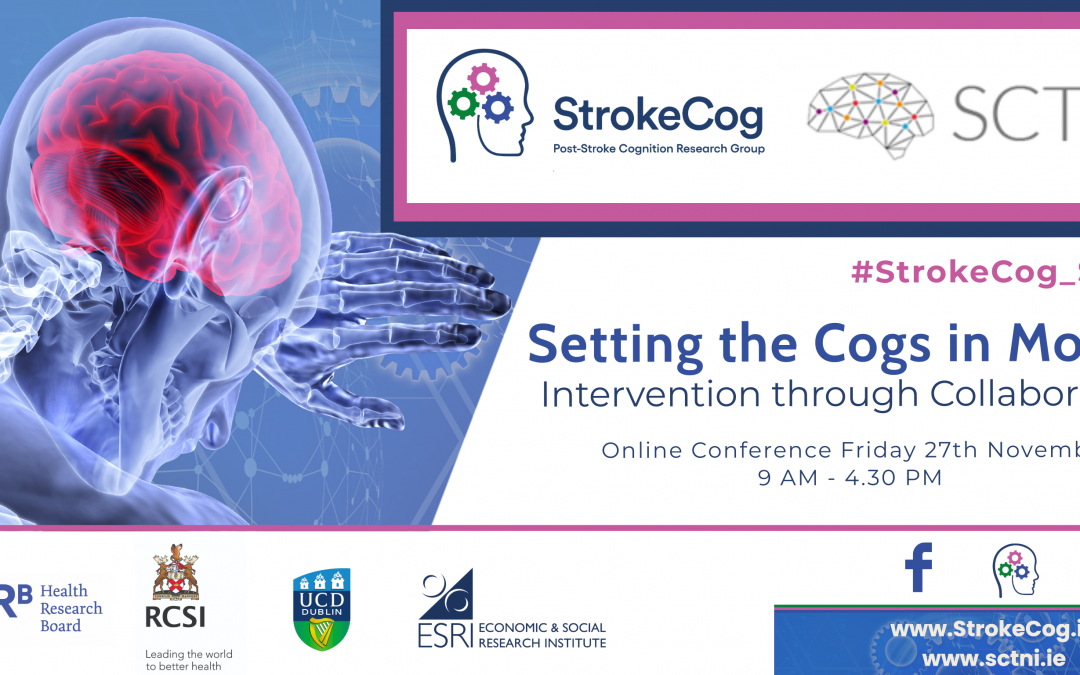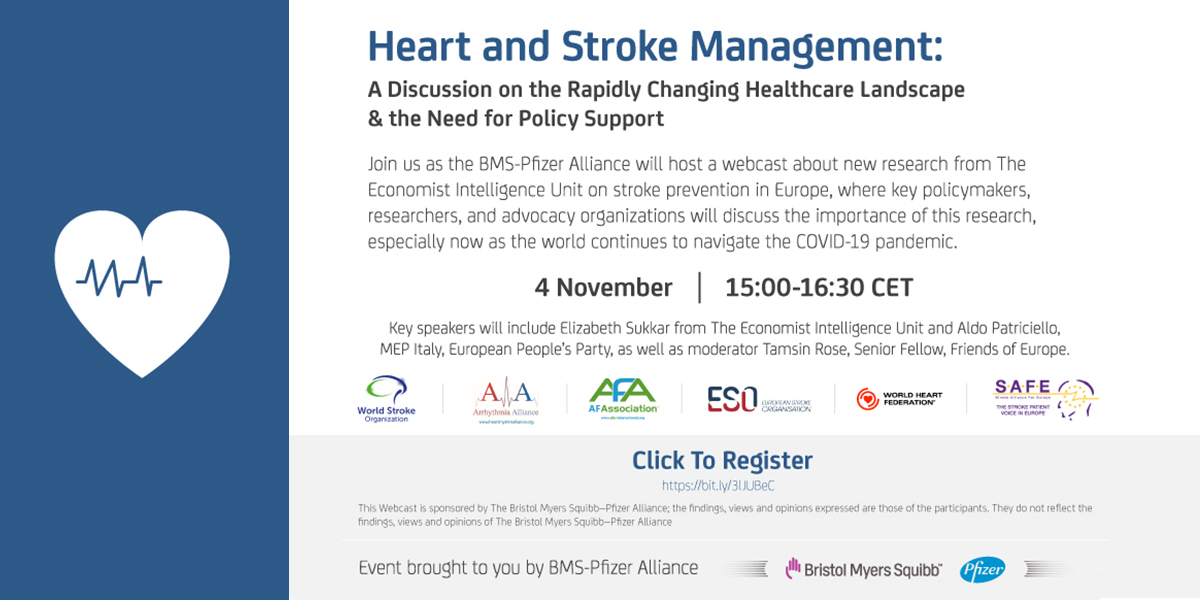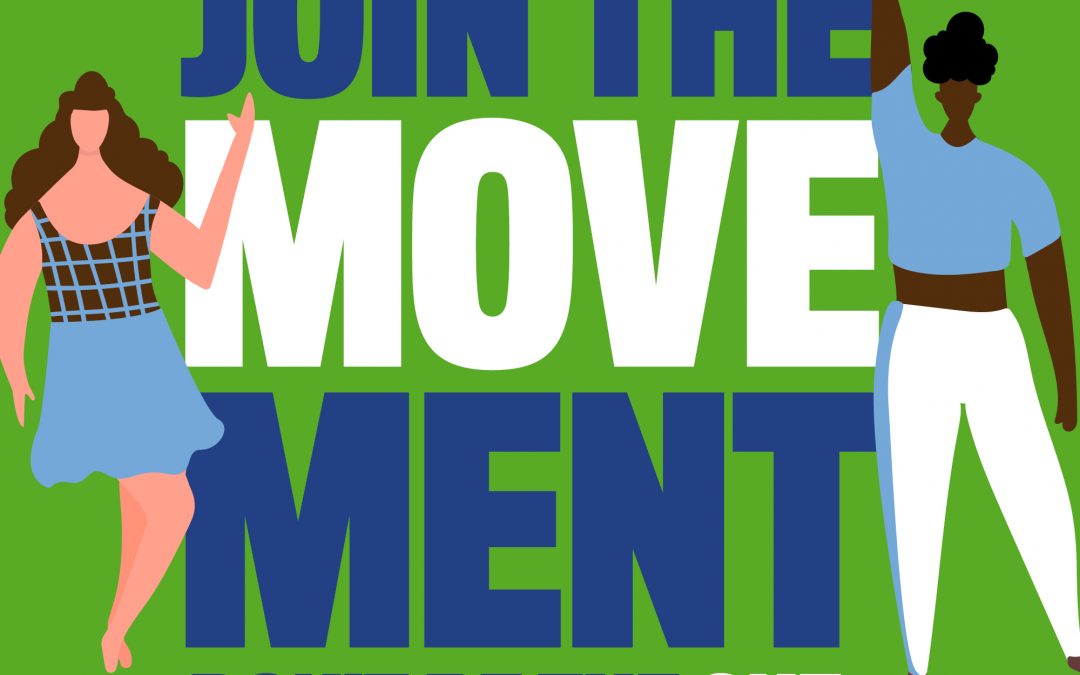
Nov 13, 2020
The 27th November is the deadline for the abstract submissions for the 1st European Life After Stroke Forum.
We are calling on for applications in two areas:
- Scientific applications: this may be for completed for ongoing trials and studies in the broad area of life after stroke.
- Grab and Steal: this is to share experiences of service developments in life after stroke where these original ideas and innovative practices could be used by others.
We are seeking abstracts which may give those interested an opportunity to present either a ten-minute oral presentation or a poster presentation.
For more information on how to apply – click here: https://bit.ly/31xwCIS
Please share with your contacts – we are really looking forward to receiving excellent applications, whether scientifically, or service development focused, from all over Europe.

Nov 13, 2020
Our President, Jon Barrick, will be presenting at ‘Setting the Cogs in Motion: Intervention though Collaboration’ conference on 27th November 2020.
The event focuses on post-stroke cognitive impairment and promises to be a great day of exciting talks and presentations from speakers including Professor Terry Quinn, University of Glasgow and Professor Urs Fischer, University Hospital, Bern, members of the StrokeCog team, representatives from Headway Ireland, Irish Heart Foundation, Family Careers Ireland and The Stroke Alliance for Europe, among many others.
There will be a mix of patient/public, researcher, policy and health-care professional speakers and this is set to be a very interesting event!
Registration is FREE, but places are limited so register early!
Link to website – – www.strokecog.ie/conference
Link to Registration – https://bit.ly/3mMuWTc
Join the conversation on Twitter @StrokeCog and @SCTNIreland by using the official hashtag #StrokeCog_SCTNI

Nov 9, 2020
Brussels, 9 November 2020 – New research published today shows future costs of stroke care in Europe could increase to €86 billion in 2040 if we fail to invest in stroke prevention, treatments and rehabilitation.
The study was commissioned by SAFE and undertaken by the heath economics team at the University of Oxford, pre COVID-19.
At What Cost – the Economic Impact of Stroke in Europe [add in link] adds to the existing evidence that shows stroke care is woefully underfunded and needs urgent investment.
Lead researcher, Dr Ramon Luengo-Fernandez says: “The research was completed before COVID-19. Since the beginning of the pandemic, services have been diverted away from non-infectious conditions, including stroke care, therefore we feel that the projected costs in our report are likely to be even higher.”
The study included all stroke-related costs that occurred in the EU countries plus the UK, Israel, Norway, Iceland and Switzerland in 2017.
Report findings show for the first time the cost of stroke along the whole stroke care pathway, including not only direct healthcare costs but also the costs of informal care and productivity losses due to disability or death from stroke. The study provides scientific projections related to stroke costs for the next 20 years.
In addition, the report looks at three interventions which are in the latest stroke guidelines – the treatment of atrial fibrillation to prevent stroke, mechanical thrombectomy (the clot retrieval from the blood vessel in the brain) in the acute phase of stroke and community-based rehabilitation after stroke. The research shows that no matter at which point in the stroke pathway you intervene – prevention, treatment, long-term care – there’s likely big gains to be had in terms of patient outcomes and cost savings.
In 2017, nearly 1.5 million people suffered a stroke, nine million Europeans lived with a stroke, and more than 430,000 people died due to a stroke in the 32 countries under this study. The total cost of stroke in 2017 was a €60 billion.
The number of new strokes and the number of people living with stroke is set to rise due to ageing population in Europe, as age is the biggest, non-modifiable risk factor for stroke. The costs of stroke are projected to increase by 44% between 2017 and 2040, with some countries seeing rises in stroke-related costs of nearly 100%.
SAFE’S Director General, Arlene Wilkie adds, “Health systems across Europe have been left crushed and broken by COVID-19. Stroke is preventable and it is crucial that we invest in care and support that can respond to the current and future needs of stroke survivors.
This research offers solutions to help reduce the burden of stroke and future proof healthcare services at the time when COVID-19 has amplified the problem and exposed already overstretched and failing healthcare systems. SAFE calls on the EU and national governments to make stroke care a priority and ensure it is fit for the future.”
Summary of findings report
Full research report

Oct 26, 2020
We are excited to announce the first ever European Life After Stroke Forum is going virtual.
With so much uncertainty in the midst of the COVID-19 pandemic, we can now ensure that this important event will be able to go ahead and be accessible to many more delegates across Europe.
If the ELASF is not already in your calendar, make sure you add 12 March 2021 and watch this space for more information in the next few weeks.
We’ll be will post regular updates on our website, including how to register, on our website and on social media, in the coming months. If you would like to know more – why not follow us on Twitter @StrokeEurope #ELASF or sign up to our enewsletter for regular updates
Research and investment in all aspects of the life after stroke care pathway has been neglected. This forum is unique and crucial in bringing together the latest research and needs of stroke survivors to contribute to the SAPE and ultimately improve life after stroke across Europe.
Image by Alexandra_Koch from Pixabay

Oct 25, 2020
Join us for this webinar: Heart and stroke management: a discussion on the rapidly changing healthcare landscape & the need for policy support
Date: Wednesday, 4 November 2020 Time: 15:00 CEST
Duration: 1 hour, 30 minutes Registration: https://bit.ly/3lJUBeC

Oct 23, 2020
We are proud to support World Stroke Day on 29 October.
1 in 4 of us will have a stroke – Don’t be the One and join the MoveMent – be part of the world’s biggest dance chain to prevent stroke.
Help us raise awareness of stroke on World Stroke Day.
Reach out to everyone you know and ask them to help get the message out and even better to be part of the Global Dance Chain Challenge.
Spread the word about World Stroke Day by sharing on social media and emails.
To find out more follow @WStrokeCampaign or check out their website here










